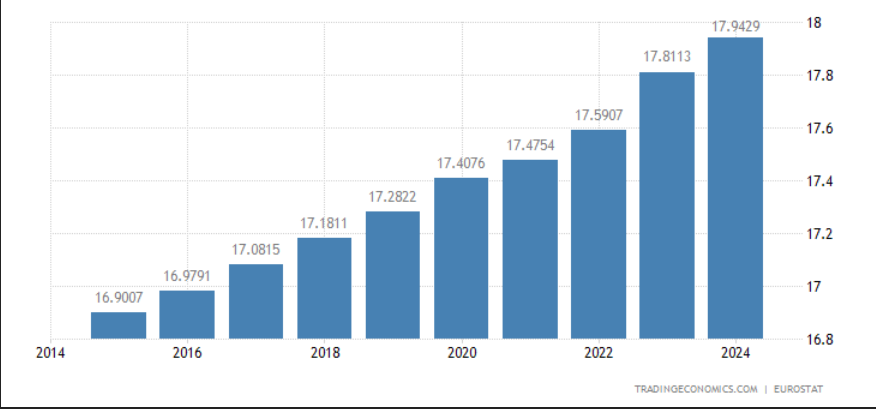According to preliminary figures from Statistics Netherlands (CBS), the population of the Netherlands grew by approximately 140,000 in 2023, bringing the total to over 17.9 million. This marks a significant slowdown, with population growth falling by more than 36 percent compared to 2022, when the country saw a net increase of 221,000 inhabitants.

For the first time in years, the number of deaths exceeded the number of births, meaning that the country’s population growth was entirely due to immigration. However, fewer immigrants arrived in the Netherlands last year, and the number of non-Dutch people emigrating from the country increased, particularly to their countries of origin.
In 2023, an estimated 165,000 children were born, a decrease of about 3,000 compared to 2022. The fertility rate in the Netherlands has been on a downward trend since 2010 and is projected to reach an average of 1.43 children per woman in 2023. This is slightly lower than the low point reached in the early 1980s.
The Netherlands saw around 169,000 deaths in 2023, a figure similar to 2022. While excess mortality decreased, the overall mortality rate remained relatively high. Without accounting for immigration, this resulted in a natural population decline of over 4,000 people.
Additionally, roughly 9,500 Dutch citizens left the Netherlands in 2023, a slight decrease from the 10,500 who emigrated in 2022.
The largest group of immigrants came from Europe, with 59,300 arrivals. Among these, the majority were from former Soviet Union countries, totaling 24,500. Other notable increases included 16,500 immigrants and asylum seekers from Syria, 10,700 from Turkey, 7,600 from India, and 6,600 from Poland. There was also a net population increase of about 34,800 people from non-Soviet European countries.
In terms of regional migration, there was a net increase of 58,100 people from Asia, 14,200 from Africa, and 15,900 from the Americas or Oceania.
As of November 1, 2023, the Netherlands had issued 139,600 permits to Ukrainian refugees under the Temporary Protection Directive, which was activated due to the ongoing war in Ukraine. This group does not have to go through the asylum process. The number of Ukrainian refugees per capita is 7.8 per thousand inhabitants in the Netherlands, which is below the EU average of 9.3 per thousand.
JSN
Source: editorial
for more info contact us editorial@somalidutchuk.nl